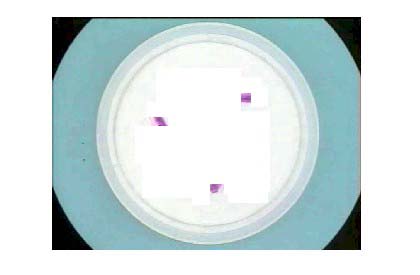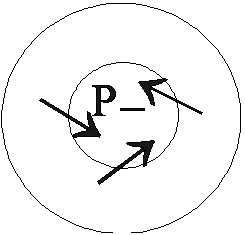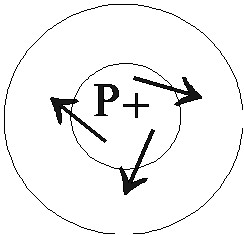Introduction | Tank – How to | Tank – Examples | Atmosphere – Examples | Theory| For Teachers | Wiki
Ekman layers and the effect of friction on rotating flow, can be readily studied in these simple laboratory experiments.
How to Carry Out the Experiment
We bring a cylindrical tank (or a square tank with a circular insert), filled to a depth of 10 cm or so with water at a uniform temperature, up to solid-body rotation at a speed of 5 rpm, say. This may take 10 minutes or so. Sprinkle a few small crystals of Potassium Permanganate in to the tank to check that the water is in solid body rotation.
We then distribute three small concentrations of Potassium Permanganate crystals at the corners of a triangle, roughly as marked in the photograph below. Don’t overdo it! These will allow us to see the flow right at the bottom of the tank, in the Ekman layer.
You can also float a few black dots on the surface of the water. These will give us an indication of the upper-level flow.
Low Pressure
Now we reduce the rotation rate to say 3 rpm. The fluid continues in solid rotation like a cyclonic vortex (same sense of rotation as the table) with lower pressure in the center and higher pressure near the rim of the tank. Note that the plumes of dye from the crystals on the bottom of the tank flow inward to the center of the tank at about 45 degrees (see diagram below) relative to the geostrophic current revealed by the black dots floating on the surface.
High Pressure
Now we increase the rotation rate. The relative flow is now anticyclonic with high pressure in the center and low pressure on the rim. Note how the plumes of dye sweep around to point outward.
In each case we see that the rough bottom of the tank slows the currents down there, and induces a cross-isobaric flow from high to low pressure. Above the frictional layer, however, the flow remains close to geostrophic.


